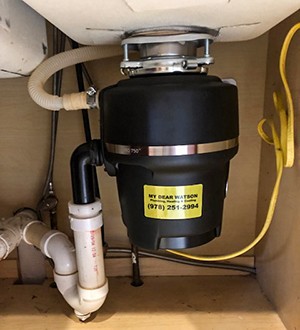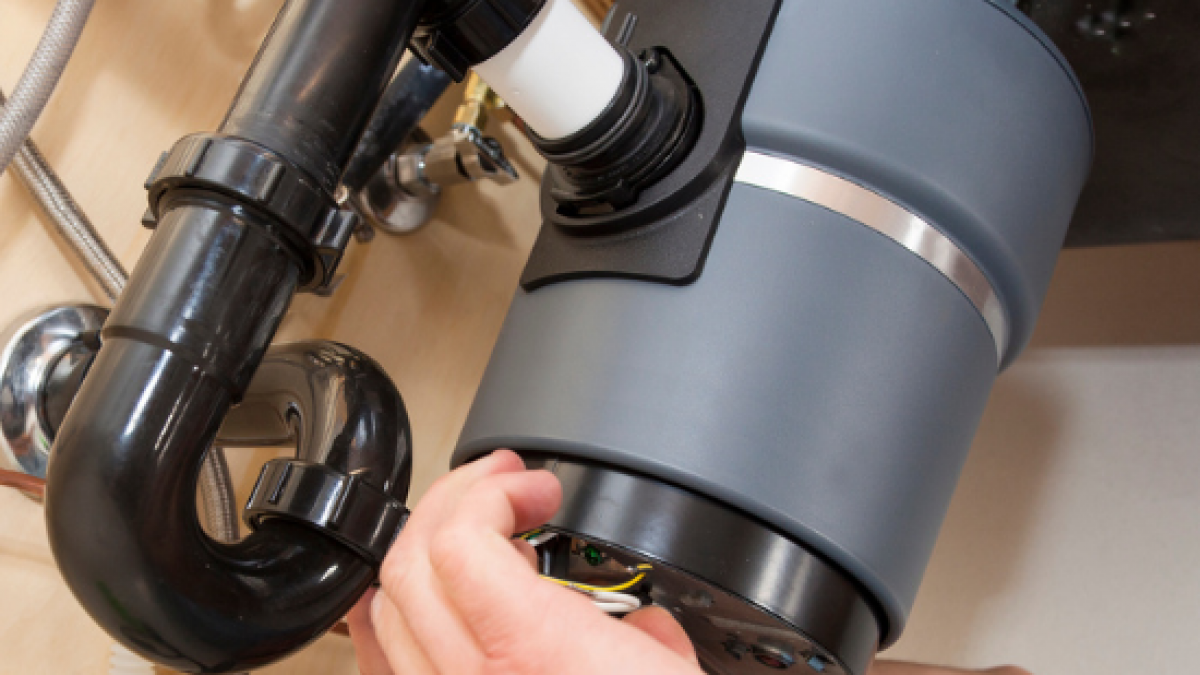Swift Solutions for Fixing a Dripping Waste Disposal Unit
Swift Solutions for Fixing a Dripping Waste Disposal Unit
Blog Article
The writer is making a number of good annotation relating to Garbage Disposal Leaking From Bottom overall in this post below.

Garbage disposals are necessary kitchen area home appliances that aid in taking care of food waste efficiently. Nonetheless, a dripping waste disposal unit can be an irritating and unpleasant trouble to manage. Fortunately, many leakages can be taken care of quickly with a few simple actions. In this post, we will discuss just how to take care of a leaking waste disposal unit successfully.
Introduction
Waste disposal unit are installed under cooking area sinks and are developed to shred food waste right into smaller sized pieces, enabling it to travel through the pipes system easily. While these gadgets are usually dependable, leaks can take place with time due to deterioration, loosened links, or damages to the unit.
Common Causes of Leaks in Garbage Disposals
Worn Seals and Gaskets
Seals and gaskets play an important role in preventing water from leaking out of the waste disposal unit. With time, these parts can degrade, causing leaks around the disposal unit.
Loose Links
The connections in between the waste disposal unit and the plumbing system can become loosened in time, causing water to leakage out during operation.
Cracks or Openings in the Disposal System
Physical damages to the garbage disposal, such as splits or holes in the real estate, can additionally cause leakages.
Identifying the Resource of the Leakage
Before trying to fix a dripping garbage disposal, it is essential to recognize the source of the leakage. This can typically be done via aesthetic evaluation or by performing simple examinations.
Visual Assessment
Examine the garbage disposal unit carefully for any type of indications of water leak. Pay attention to areas around seals, gaskets, and link points.
Testing for Leakages
One method to examine for leakages is by running water with the disposal system and checking for any kind of visible indications of leak.
Tools and Materials Needed for Dealing With a Leaking Garbage Disposal
Before starting the repair work process, collect the essential tools and products, including a screwdriver, adjustable wrench, plumbing's putty, replacement seals or gaskets, and epoxy or patching material for fixing cracks or holes.
Step-by-Step Overview to Taking Care Of a Dripping Waste Disposal Unit
Turn Off the Power
Prior to attempting any kind of repairs, make certain that the power to the waste disposal unit system is shut off to prevent the risk of electric shock.
Situate the Leakage
Recognize the exact area of the leak and establish the reason.
Tighten Links
Use a wrench to tighten any loosened links between the disposal device and the plumbing system.
Change Seals or Gaskets
If the leakage results from used seals or gaskets, remove the old components and replace them with brand-new ones.
Patching Cracks or Holes
For fractures or openings in the disposal unit, usage epoxy or a suitable patching product to seal the damaged area.
Testing the Garbage Disposal After Repair Service
Once the repair is total, test the waste disposal unit by running water with it to guarantee that the leakage has been solved.
Preventive Maintenance Tips to Stay Clear Of Future Leakages
To prevent future leaks, it is necessary to perform regular maintenance on your garbage disposal. This includes keeping it tidy, staying clear of putting non-food things or hard items down the disposal, and occasionally checking for leaks or various other issues.
Verdict
To conclude, fixing a leaking garbage disposal is a relatively uncomplicated process that can be completed with fundamental devices and materials. By adhering to the steps detailed in this post and exercising preventative upkeep, you can maintain your waste disposal unit in good working problem and avoid pricey repair services in the future.
HERE’S HOW TO FIX YOUR GARBAGE DISPOSAL
WHAT TO DO IF SOMETHING IS STUCK IN YOUR GARBAGE DISPOSAL
If the impeller won’t turn, there’s probably something stuck in the disposal. It could be a steak bone or peach pit, although plumbers report pulling all sorts of inappropriate objects out of disposals, such as bottle caps or aluminum foil. Make sure power to the disposal is off, and look inside to see if you can see the source of the jam.
Never stick your fingers in a disposal. Pull out anything you see with tongs or pliers.
If the disposal still won’t work, it may be time to call a plumber or consider buying a new disposal. GEM Plumbing & Heating is here for all of your garbage disposal needs.
WHAT TO DO IF YOUR GARBAGE DISPOSAL DRAIN IS CLOGGED
Take everything out from underneath your sink and put a bucket or other container under your disposal to catch any water that drains out. Disconnect your disposal from the power supply. If it’s plugged into a wall outlet, unplug it. If it’s hardwired into an electrical box, go to the electrical panel and turn off the breaker for the disposal. Pour ¼ cup of baking soda into the drain, followed by ½ cup of white vinegar. Give the solution a few minutes to fizz and do its work. Look into the disposal with a flashlight to see if you can see an object that might be causing the clog. If you see it, remove it using tongs or pliers. MORE TIPS ON DEALING WITH A CLOGGED GARBAGE DISPOSAL
Never use drain cleaner in a garbage disposal. It can damage the plastic parts inside the disposal. You can also be splashed with the caustic liquid while working to clear the clog. Beware! Never stick your fingers into a garbage disposal. Trust us — not a good idea. In many instances, your dishwasher drains through your garbage disposal. This allows the disposal to grind any large food particles that may be drained out of your dishwasher. There are some jurisdictions, however, where the plumbing code prohibits such a connection. WHAT TO DO WHEN YOUR DISHWASHER DRAINS THROUGH THE DISPOSAL
Run some water in the sink so your plunger has at least a ½-inch of water to create a seal and plunge vigorously up and down several times. You may need to repeat this several times. Run hot water down the drain to clear any residue that remains.

Do you appreciate reading up on Why Is ? Try to leave a remark below. We'd be glad to find out your opinion about this piece. We hope that you come back again soon. Sharing is good. Who knows, you may just be doing someone a favor. Thank you for your time. Don't forget to come by our blog back soon.
Call Us Today Report this page